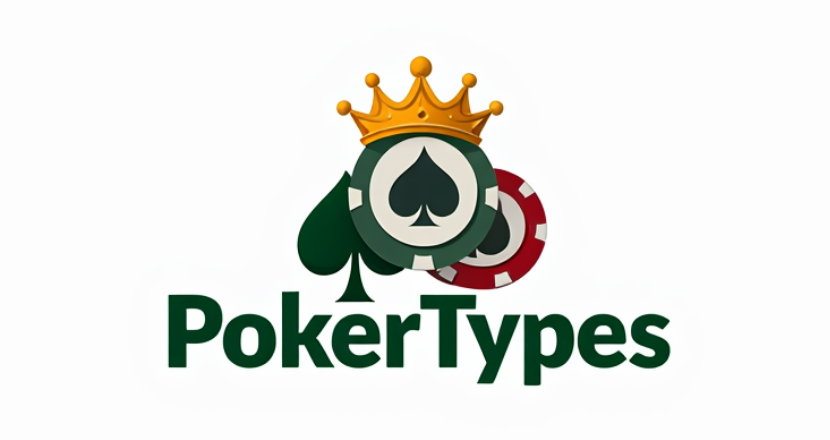In poker, your bankroll isn’t just your money—it’s your lifeline. Bankroll management is the art of protecting that lifeline, ensuring you can weather the inevitable ups and downs of the game.
Whether you’re grinding micro-stakes or eyeing the high-roller tables, managing your funds wisely is non-negotiable. For instance, did you know that poor bankroll management is the #1 reason players go broke?
Even legends like Daniel Negreanu emphasize its importance, advocating strategies to mitigate variance and maintain emotional stability during losing streaks.
Let’s break it down: your bankroll is the amount of money set aside solely for poker—separate from rent, groceries, or other essentials.
For example, if you’re playing $0.05/$0.10 No-Limit Hold’em, experts recommend keeping at least 20–50 buy-ins (around $200–$500) to avoid financial stress.
For tournaments, where variance runs wild, having 100–300 buy-ins is crucial. These guidelines aren’t just arbitrary—they’re based on decades of experience from pros who’ve seen it all.
Consider this: a single bad beat or downswing can wipe out an unprepared player. But with proper bankroll management, you can stay in action and even thrive.
By setting limits, tracking performance with tools like Poker Tracker, and knowing when to adjust stakes, you’ll not only protect your bankroll but also elevate your game.
Setting Up Your Poker Bankroll
Think of your poker bankroll as your safety net. It is the money you set aside exclusively for playing poker, and keeping it separate from your personal finances is non-negotiable.
Why? Because mixing poker funds with rent or grocery money is a recipe for stress—and stress kills good decision-making at the table.
Imagine this: you lose a big hand, and suddenly you are worried about next month’s bills. That is not the mindset of a winning player.
Start by separating your poker bankroll from your everyday funds. Many pros suggest opening a dedicated bank account, using an e-wallet, or even keeping cash in an envelope.
The key is to ensure that this money is disposable—funds you can afford to lose without jeopardizing your lifestyle. For example, if you have $500 in extra savings, you might allocate $200 for poker while keeping the rest for emergencies.
Next, determine your starting bankroll size based on the stakes you plan to play. For beginners dipping their toes into micro-stakes games like $0.01/$0.02 No-Limit Hold’em, a $100 bankroll (50 buy-ins) is a solid starting point. If tournaments are more your style, aim for 100–300 buy-ins due to their higher variance.
If you are new to the game or short on funds, consider freeroll tournaments as a risk-free way to build your bankroll. These events cost nothing to enter but offer real cash prizes—perfect for beginners learning the ropes.
Many online platforms host daily freerolls, so take advantage of them to grow your funds without spending a dime.
By separating your finances, setting realistic starting amounts, and leveraging freerolls when needed, you will create a solid foundation for sustainable poker play.
This approach keeps you in the game longer and helps you focus on improving your skills instead of worrying about money.
Core Principles of Bankroll Management
Managing your poker bankroll is like steering a ship through unpredictable waters—it requires balance, discipline, and adaptability. The first rule? Risk management.
Never risk more than 5% of your total bankroll on a single session or tournament buy-in. For example, if your bankroll is $1,000, limit your buy-in to $50 or less. This ensures you can handle inevitable losses without going broke.
Next up is game selection, which is all about playing at stakes that suit your bankroll. For cash games, experts recommend maintaining 20–50 buy-ins for your chosen stakes. If you are playing $0.05/$0.10 No-Limit Hold’em, you should have at least $200 set aside.
Tournaments, however, involve higher variance, so you need a bigger cushion—typically 100–300 buy-ins. For instance, if you play $10 Multi-Table Tournaments (MTTs), aim for a bankroll of $2,000–$3,000.
Finally, adapt to the ebb and flow of your bankroll by adjusting stakes dynamically. When your bankroll grows, take calculated shots at higher stakes to maximize profits. Conversely, if you hit a downswing, drop to lower stakes to preserve funds and rebuild confidence.
Read More: How to Play 8 Game Poker?
Managing Variance
Variance in poker is like riding a rollercoaster—you will have thrilling highs and gut-wrenching lows. Even the best players, like Phil Ivey, face losing streaks due to variance.
It is the natural swings in results caused by luck, and understanding this helps you prepare for inevitable downswings.
For instance, you might lose with pocket aces to an improbable hand. Does it sting? Absolutely. But knowing it is part of the game keeps you from spiraling emotionally.
To handle variance, adopt conservative bankroll strategies, especially for high-variance formats like Multi-Table Tournaments (MTTs) or Pot-Limit Omaha (PLO).
These games are unpredictable, so having a larger bankroll—100 to 300 buy-ins—is essential for staying afloat during dry spells. For example, if you play $10 MTTs, aim for a bankroll of $2,000–$3,000.
Equally important is avoiding emotional tilt. Set stop-loss limits to prevent frustration from clouding your judgment. For example, quit a session after losing two buy-ins or hitting a pre-set loss threshold.
This discipline keeps you from chasing losses—a slippery slope that can devastate your bankroll.
Strategic Tips for Bankroll Growth
Growing your poker bankroll is not just about playing well—it is also about making smart financial moves. One of the easiest ways to give your bankroll a boost is by leveraging bonuses and promotions.
Many online poker sites offer welcome bonuses, deposit matches, or rakeback programs. For example, some platforms double or even triple your initial deposit, giving you extra funds to play with.
Always read the terms carefully, though—bonuses often come with wagering requirements. Use these offers strategically in lower-stakes games to maximize value while minimizing risk.
Another key factor is game type selection. If you prefer low variance and steadier growth, stick to cash games or sit-and-go tournaments.
These formats are less swingy and allow for more consistent returns. On the other hand, if you are comfortable with higher variance and have a larger bankroll, try large-field Multi-Table Tournaments (MTTs) or turbo formats. These games offer bigger payouts but require more buy-ins due to their unpredictability.
Finally, learn to take shots wisely. Occasionally playing higher stakes can accelerate your bankroll growth, but only if your bankroll can absorb potential losses.
For instance, limit these attempts to a few buy-ins and only take shots when you are confident in your game and the conditions are favorable. If things do not go as planned, drop back down immediately to protect your funds.
Tools and Tracking
Tracking your poker performance is like having a personal coach—it helps you spot strengths, fix leaks, and grow as a player. Apps like Poker Stack and PokerTracker 4 are game-changers.
They let you monitor wins, losses, and key stats like your hourly win rate or BB/100. For example, Poker Stack offers over 40 graphs to visualize your progress, while PokerTracker 4 provides detailed reports and HUDs for online games.
Analyzing session data is equally important. Use these tools to identify profitable formats or areas needing improvement. Spotting trends, like which days or stakes yield the best results, can sharpen your strategy over time.
Avoiding Common Pitfalls
Poker is as much about discipline as it is about skill, and avoiding common bankroll pitfalls can save you from unnecessary headaches. First, be cautious with rebuy tournaments.
These can quickly drain your bankroll if you do not account for the extra costs of multiple rebuys and add-ons. For example, a $5 rebuy tournament can easily turn into a $15 or $20 expense if you are not careful.
In cash games, disable the auto top-up feature. While it might seem convenient to automatically replenish your stack, it can lead to overspending without realizing it. Instead, manually control your buy-ins to stay within your limits.
Lastly, always register early for tournaments. Early registration maximizes your chip utility and gives you more time to build a stack.
Late registration often leaves you at a disadvantage with fewer chips relative to the blinds, increasing variance and reducing your chances of success.
By staying mindful of these pitfalls, you can protect your bankroll and make smarter decisions at the tables.
Read More: How to Play Tight vs Loose in Poker?
Advanced Considerations
When it comes to advanced bankroll management, your skill level plays a significant role. Experienced players with a strong edge can afford smaller buffers since they face less variance.
For example, a seasoned cash game player might manage with 30 buy-ins, while a newer player might need closer to 50.
For professional players, separating poker funds from living expenses is critical. Keep a dedicated bankroll for poker and another for rent, bills, and daily costs.
This ensures financial stability even during downswings. Additionally, track every session meticulously using tools like PokerTracker or spreadsheets. This helps evaluate long-term profitability and identify areas for improvement.
Conclusion
Mastering bankroll management is not just a skill—it is the foundation of long-term poker success. Whether you are playing micro-stakes or aiming for the World Series of Poker, managing your funds wisely ensures you stay in the game, even during rough patches.
For example, Daniel Negreanu, one of poker’s greats, emphasizes that disciplined bankroll practices are what separate casual players from professionals.
By sticking to strict risk management rules, such as never risking more than 5% of your bankroll on a single buy-in, you can protect yourself from devastating downswings.
Tools like PokerTracker 4 and Poker Stack help track wins, losses, and overall performance, giving you valuable insights to refine your strategy.
For instance, identifying profitable formats or adjusting stakes based on session data can make a significant difference.
Additionally, leveraging bonuses and rakeback programs is a smart way to grow your bankroll without extra risk.
Many players underestimate the value of these promotions, but over time, they can add hundreds or even thousands of dollars to your funds.
Ultimately, bankroll management is about discipline and adaptability.
By setting clear limits, tracking every session, and adjusting stakes as needed, you can confidently navigate poker’s highs and lows while steadily building your bankroll.
Remember, the goal is not just to win today but to ensure you can keep playing tomorrow.


